Lucifer
Otto Rahn Memorial Website interview with Jeanne D'Août, the Author of White Lie
Hi, Jeanne!
I congratulate you on the release of your book White Lie. This is a great event for all who are familiar with the work, searching and life of Otto Wilhelm Rahn. When did you first hear of him?
Jeanne:
The first time I heard of Otto Rahn was probably during my research of the history of Montségur and the Cathars in connection with Grail lore. I never studied the man himself and only knew what most people know; that he researched Grail lore, visited Montségur and was working for Himmler as a relic hunter in a pre-war Germany. It wasn't until 2008 that a friend sent me "Crusade against the Grail" in English, followed by "Lucifer's Court" and Nigel Graddon's "Otto Rahn, Quest for the Holy Grail". I was thinking of writing a thriller book at that time about the 1st century, and the mysteries of the Languedoc. I had already done a lot of research for the book, but didn't get around to actually writing it, because the financial crisis had made me and my husband work 7 days a week to make a living. In 2011 I first had the chance to sit down properly and started writing in January. I would write almost 18 to 20 hours a day for several months and Otto slowly became one of the key players in the book.
Otto Rahn: author, poet, Grail seeker, SS officer
In February 2007, Montserrat Rico Góngora published “The Desecrated Abbey”, in which he claimed that Heinrich Himmler, Hitler’s second-in-command and head of the Nazi SS, had made a secret wartime mission to an abbey in Spain, in search of the Holy Grail. Góngora even interviewed Andreu Ripol Noble, a former monk and the only person that spoke German, who was ordered by his superiors to guide Himmler during the visit in 1940. Ripol related that Himmler came to Montserrat inspired by Richard Wagner’s opera “Parsifal”, which mentions that the Holy Grail could be kept in “the marvellous castle of Montsalvat in the Pyrenees” – the mountain range that marks the border between France and Spain.
Il neopaganesimo di Otto Rahn
Il caso di Otto Rahn è ormai noto: è la storia di un giovane romantico, che insegue un sogno. Un giorno entra in contatto con un potere sensibile al mito – il Terzo Reich -, che lo lancia e lo valorizza: ciò che presto lo porta a credersi una specie di nuovo cavaliere templare. Il mito del Graal, quello di una società di puri e di idealisti, di un regno dello spirito, popolava il suo immaginario. Certo del legame storico tra l’eresia dei Catari e la poesia dei trovatori medievali, l’una è l’altra viste come sopravvivenza pagana sotto la scorza del cristianesimo ufficiale, Rahn si convinse che il fulcro di questa cultura si fosse trovato un tempo nel castello provenzale di Montségur, alle pendici dei Pirenei. Proprio il luogo dove, nel 1244, avvenne il finale sterminio dei Catari da parte della Chiesa. In questa zona, intorno al 1929, Rahn svolse ricerce, percorse grotte e camminamenti, rintracciò graffiti e interpretò simboli arcani. Alla fine raccolse il tutto e scrisse il celebre libro Crociata contro il Graal, pubblicato nel 1933. L’incontro fatale con Himmler, anch’egli interessato alla storia delle eresie e all’universo dei simboli pre-cristiani, il pronto arruolamento e la rapida ascesa nelle SS, portarono però Rahn a inciampare nel suo piccolo-grande segreto. Sembra infatti che una mal vissuta omosessualità sia stata all’origine delle sue dimissioni dall’Ordine Nero nel 1938 e infine del suo suicidio, avvenuto per congelamento tra le montagne del Tirolo, nel marzo del 1939. Rahn rimase vittima di un trauma, per esser stato coinvolto in un piccolo scandalo omoerotico? Non resse il clima ideologico delle SS? Venne forse spinto a quel gesto? O ci arrivò da solo, per evitare l’isolamento sociale e magari la persecuzione?
Karl Maria Wiligut, le mentor secret d’Himmler
Manfred Lenz, Dimanche, 30 Avril 2006
Un entretien avec Gabriele Winckler-Dechend<
Madame Winckler, vous avez personnellement connu Wiligut. Quand avez-vous été employée par lui au cabinet du Reichführer SS, Heinrich Himmler ?
Le colonel Wiligut était un ami de ma mère bien avant 1933 et elle était très intéressée par sa « Tradition ». A cause de cela, elle lui rendait souvent visite à ??? ou Wiligut possédait une petite maison depuis la fin de la première guerre mondiale. Elle était entourée d’un jardin qu’il cultivait lui-même pour nourrit sa famille.
Ce doit être en 1933 que le colonel fut persécuté en Autriche, du fait de ses liens avec Schönerer et Lüger .
Hans-Jürgen Lange: Otto Rahn oder was ist historische Wahrheit?
Der Volksmund sagt: "Lügen haben kurze Beine", schön wäre es, aber in Wirklichkeit wird Geschichte auch von unsterblichen "Zeitungsenten" beherrscht.
Was das mit Otto Rahn zu tun hat? Wie ich meine, eine ganze Menge.
Denn was bei Zeitungen nicht ins Gewicht fällt, wie heißt es doch so schön - "nichts ist älter als die Zeitung von gestern" - hat in Büchern ein langes Leben. Drei Beispiele aus der neueren Literatur können diese verschiedenen Formen von Scheintatsachen belegen.
Otto Rahn im Wikipedia
Otto Wilhelm Rahn (* 18. Februar 1904 in Michelstadt im Odenwald; † 13./14. März 1939 bei Söll (Tirol), Österreich) war ein deutscher Schriftsteller, Mediävist und Ariosoph,[1] der sich mit dem Gralsmythos beschäftigte.
Leben
Schule und Studium
Rahn wurde 1904 in Michelstadt/Odenwald als erstes Kind des Justizamtmanns Karl und Clara Rahn (geb. Hamburger) geboren. Ab 1910 besuchte er das humanistische Gymnasium erst in Bingen, wo er bis zum Beginn des Ersten Weltkriegs lebte. Sein Abitur machte er in Gießen. Dort begeisterte ihn sein Religionslehrer Freiherr von Gall erstmals für die Geschichte der Katharer. 1922 begann Rahn ein Jurastudium in Gießen, das er an der Albert-Ludwigs-Universität Freiburg und der Universität Heidelberg fortsetzte. 1925 bis 1928 unterbrach er sein Jurastudium und betätigte sich als Handelsreisender für verschiedene Verlage.

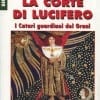
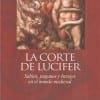
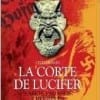
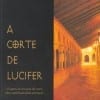
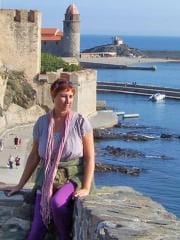
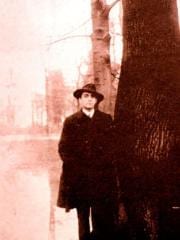
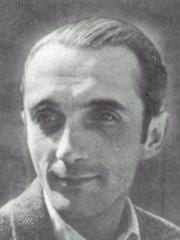
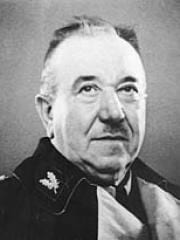
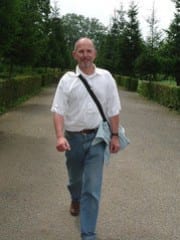

Neueste Kommentare
vor 13 Jahre 17 Wochen
vor 13 Jahre 17 Wochen
vor 13 Jahre 17 Wochen
vor 13 Jahre 17 Wochen
vor 13 Jahre 20 Wochen
vor 13 Jahre 26 Wochen